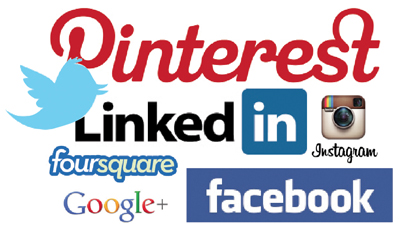The same way that I’ve grown up watching non-New Yorkers badmouth the Yankees for “buying championships,” I’ve noticed many people in recent years dismiss social media as a fad.
The problem with most of these critics is that they’re simply being hypocritical. Non-Yankees fans wish that their favorite team had a payroll that enabled them to sign pricey free agents, while those who complain about how much they dislike social media are almost guaranteed to have a Facebook account. Furthermore, these people are also likely to be among the more than 398 million people who Facebook reports use its social network six out of seven days of the week.
I don’t believe it does any good to complain about facts of life that aren’t changing any time soon. I pity anyone who expects the Yankees to stop signing top free agents or predicts that social media will just go away.
We are in the midst of one of the most monumental shifts our world has seen when it comes to how humans interact with one another. People don’t call to catch up with friends and family anymore, because we know what they’ve been up to from seeing it in their personal newspapers, also known as Facebook and Twitter.
The power of social media can be summarized by looking at, arguably, the five most important aspects of multimedia that have evolved since the 18th century.
The world of multimedia essentially began back in 1721, when the first U.S. newspaper was printed, and has continued to progress over the years with the inventions of radio, television, the Internet and, you guessed it, social media.
The same way that listening to a game on the radio is nice, but doesn’t hold a candle to watching it on TV, social media has advanced our worlds by giving people (and brands) the power to tell their stories via pictures, videos and voices, rather than just the latter.
How teams are adjusting
Brands of all types have taken notice, all but giving up on using ads that ask people to visit their websites, and instead opting to focus on obtaining “likes” on Facebook. It makes sense, as they realize that this is their best shot at influencing consumers, since they are spending such an inordinate amount of time “wandering around” on Facebook.
Professional sports teams have made a conscious effort to become more social in recent years, and while I believe that most NCAA teams are a little bit behind them, it’s encouraging to see that all teams are working to connect with their fans via social media.
The biggest downside with social media today is that with so much out there, and what’s hot constantly changing, organizations often try running before walking, thus losing focus of their social media priorities.
While Facebook and Twitter have established themselves as the clear-cut social networks, there has also been tremendous buzz about Google+, Pinterest and Instagram, among many others.
Dabbling with different social networks and apps can be beneficial if an organization is maximizing its potential on the most prominent social network, but being the master of one domain is much more beneficial than being the jack-of-all-trades.
The trickiest part of social media is that it’s still so new when compared to other business facets of an organization. Marketing, advertising and public relations, for example, have been around forever, and thus have proven methods and philosophies.
Most organizations fall into the trap of approaching social media with a salesmen’s mind-set, as if it were traditional marketing. The problem is that social media is a different beast than these other categories, and it needs to be strategized accordingly.
When brands post links on their Facebook any more than sparingly, fans view it as them saying, “Oh, you came onto Facebook to look at pictures of your niece’s 2nd birthday party? Well, we don’t care! Click here, read this, and then buy that. NOW!”
While people are on Facebook, they have a mind-set different from when they’re watching TV or browsing another website. If brands are trying to sell to them in the same manner they do via traditional advertising, they will likely be tuned out and have their future page posts hidden from view.
The future of social media in sports
When we look back at the evolution of a fan’s at-home game-viewing experience, it’s fascinating to think about the improvements from radio to TV, and then TV’s own advancements to color, cable, DVR, HD and 3-D. Similarly, I expect professional and collegiate teams to continue improving their focus on their fans’ social media experience.
While teams want fans to come out to the stadium, they also will continue to concentrate on the growing opportunities to reach their fans via social media.
I anticipate teams posting more and more of their best content on their Facebook pages instead of their websites, thus posting fewer links that ask fans to leave Facebook in order to consume that content.
To continue giving sponsors the value that banner ads provide them on their website, teams will integrate their sponsors (and their sponsors’ Facebook pages) into multiple aspects of the team’s Facebook page.
Lastly, one of the most telling signs that social media is here to stay will come very soon, as every organization, which presumably has a marketing and communications department, will also have a social media department. Instead of assigning one person from marketing, there will be several full-time employees whose job descriptions will consist of strictly social media-based responsibilities. This will lead to the more effective implementation of social media strategies, which will ultimately benefit the initiatives of all other departments.
Still doubting? Don’t look now … it’s already happening.
Jeff Weiner (jweiner@esblsocialmedia.com) is CEO of ESBL Social Media, which helps athletes, sports personalities and NCAA teams expand their social media metrics and convert them into revenue.





